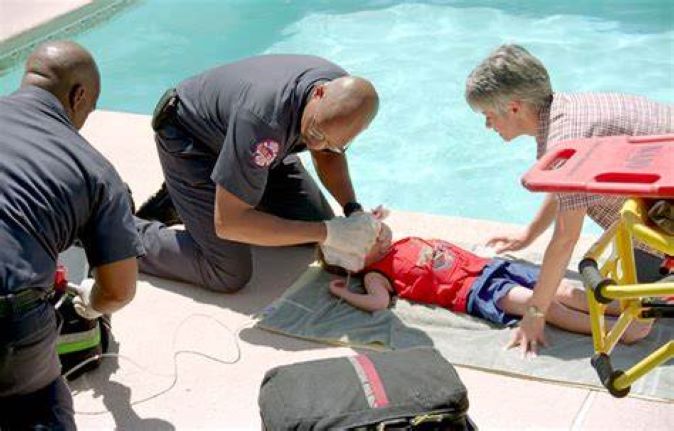
Drowning is a leading cause of death among toddlers aged one to four years old. It is a tragic and preventable occurrence that happens far too often. According to the Centers for Disease Control and Prevention (CDC), from 2016-2018, an average of 663 children died each year due to drowning, and one in five of those deaths were children under the age of 14. In this article, we will discuss children’s drowning statistics and how to prevent them.
First, let’s take a closer look at the numbers. In 2018 alone, there were 4,110 unintentional drowning deaths in the United States, with children under the age of 15 accounting for 24% of those deaths. Toddlers specifically are at a higher risk of drowning because they are curious and mobile, but they lack the cognitive and physical abilities to recognize danger and protect themselves. According to the Consumer Product Safety Commission (CPSC), children aged one to two years old have the highest drowning rates.
Your Children Will Be Exposed to These Threats
Drowning incidents often happen in swimming pools. According to the CDC, residential swimming pools were the leading location for drownings among children under the age of five. From 2016-2018, an average of 347 children under the age of 15 died in swimming pools each year, and another 2,100 were treated in emergency departments for nonfatal drowning injuries. Additionally, hot tubs and spas were responsible for another 10% of these deaths.
Other bodies of water such as lakes, rivers, and oceans also pose a significant risk for drowning incidents. In 2018, there were 379 reported drowning deaths in natural bodies of water. Toddlers are especially vulnerable to drowning in these areas because they may not understand the dangers of uneven terrain, strong currents, or sudden changes in depth.
Aside from swimming pools and natural bodies of water, drowning incidents can also occur in bathtubs, buckets, and even toilets. According to the CPSC, toddlers have drowned in as little as two inches of water. Therefore, it is essential to supervise toddlers in any situation where there is standing water.
There are also some demographic factors to consider. The CDC reports that drowning rates are higher among boys than girls, and African American children are at a higher risk of drowning than their Caucasian peers. Children from low-income families are also at a higher risk of drowning due to a lack of access to formal swimming lessons and water safety education.
Put an End to these Children’s Drowning Statistics
Preventing toddler drownings starts with being vigilant and taking necessary precautions. Here are some tips to keep in mind:
- Supervision: Always supervise toddlers around water, including swimming pools, natural bodies of water, and even bathtubs. It is important to keep a close eye on them at all times and avoid distractions like phones or books.
- Pool barriers: Install pool barriers(https://www.bestpoolfencehouston.com) like fences and gates that completely surround the pool. Make sure the barriers are at least four feet tall and have self-closing and self-latching gates that open outward. Additionally, remove any ladders or other items that could be used to climb over the fence.
- Swim lessons: Enroll toddlers in formal swim lessons(https://www.lifesaversurvivalswim.com/#section5) that teach water safety skills, including floating, treading water, and how to get to the edge of the pool. This training is critically important. However, it is important to note that even children who have taken swim lessons are still at risk of drowning, and swim lessons alone do not guarantee safety.
- Life jackets: Ensure that toddlers wear properly fitting life jackets when in or around natural bodies of water, including rivers, lakes, and oceans. The life jacket should be approved by the U.S. Coast Guard(https://uscgboating.org/recreational-boaters/life-jacket-wear-wearing-your-life-jacket.php)and have a snug fit.
- CPR training: Take a CPR course(https://www.redcross.org/local/texas/take-a-class/)cpr to learn how to respond in an emergency situation. Knowing CPR and learning it from someone knowledgeable such as the American Red Cross is one of the most valuable things that a parent can do if their children are going to learn to swim.
In Conclusion: Start with Life Saver Survival Swim School
Your family might not even have a swimming pool, yet, but your children can still learn to swim. Even if your family never owns a swimming pool, as a parent you know your children will someday be around a pool… so, please teach them to swim!
Life Saver Survival Swim School has been teaching toddlers and young infants to swim, float, and survive in aquatic situations for nearly 20 years now. Our website reviews and our Google reviews are a testament to our performance here in the Houston area.
Enroll your children in one of our open classes. Or, if you still have questions, give our owner Bonnie a call by dialing (832) 366-3008. Or, if you had rather, you can email her.

